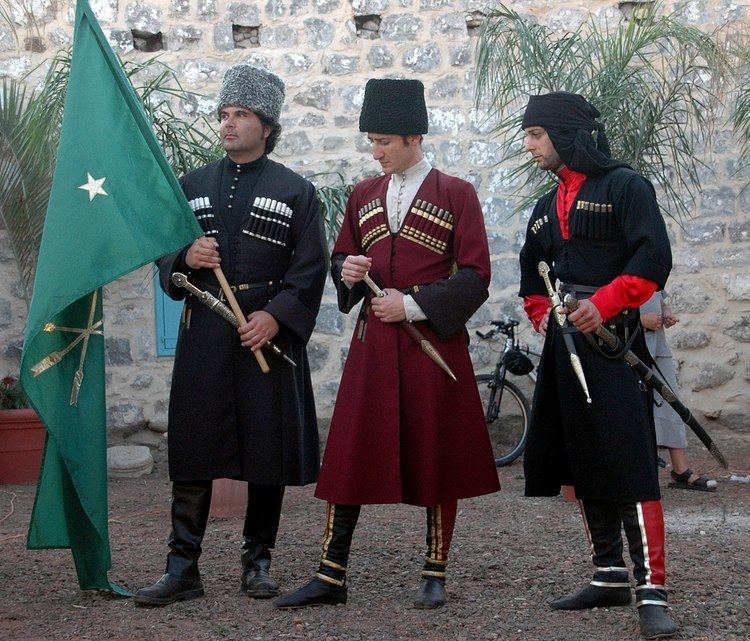 | ||
Circassians in Israel (Adyghe: Адыгэхэу Исраэл исыхэр; Hebrew: הצ'רקסים בישראל) refers to the Circassian people who live in Israel.
Contents
Circassians in Israel are Sunni Muslims, and number about 4,000 and live primarily in two towns: Kfar Kama (Adyghe: Кфар Кама) and Rehaniya (Adyghe: Рихьаные). They are one of three minority groups in Israel drafted into the Israel Defense Forces (IDF).
History
The Circassians arrived in the Middle East after they were expelled from their homeland in the northwestern Caucasus. The Circassians, who fought during the long period (see the Russian-Circassian War) wherein the Russians captured the northern Caucasus, were massacred and expelled by Czarist Russia from the Caucasus. The Ottoman Empire, which saw the Circassians as experienced fighters, absorbed them in their territory and settled them in sparsely populated areas, including the Galilee.
The Circassian exiles established Rehaniya in 1873, and Kfar Kama in 1876.
The Circassian community in Israel is well integrated into Israeli society. They speak both Adyghe and Hebrew, and many also speak Arabic and English, while cultivating their unique heritage and culture.
Israeli Circassians have had good relations with the Jewish community in Israel since the beginning of the pre-state Jewish settlement in the Land of Israel, in part due to the language shared with many of the First Aliyah immigrants from Russia who settled in the Galilee. The Circassian community in Israel helped the illegal migration of Jews from Lebanon into Mandate Palestine. Circassians fought on the Israeli side of the War of Independence. At their community leaders' request, since 1958 all male Circassians must complete the mandatory military service in the Israel Defense Forces upon reaching the age of majority, while females do not. In this, they are equal to the Israeli Jews and the Israeli Druze populations living in the State of Israel proper (this excludes the Druze population living on the Golan Heights.) The percentage of the army recruits among the Circassian community in Israel is particularly high. Many Circassians also serve in the Israel National Police, Israel Border Police, and the Israel Prison Service.
In 1976, the Circassian community won the right to maintain its own educational system separate from the Israeli government's Department of Arab Affairs. As a result, the community manages its own separate educational system, which ensures that its culture is passed down to the younger generations.
The Circassian community of Israel is concentrated almost entirely in the villages of Kfar Kama (population c. 3,000) and Rehaniya (population c. 1,000). In contrast to Circassian communities in other Middle Eastern countries, which have lost much of their traditions, Israeli Circassians have carefully preserved their culture. More than 90% of Circassians return to their villages after completing their military service and studies. Despite the difficulty of finding marriage partners within a community of 4,000, Israeli Circassians mostly shun intermarriage. Although some Arabs moved to Kfar Kama, they quickly integrated into local society and left no lasting cultural impression. Intermarriage is widely regarded as a taboo there. Rehaniya absorbed large numbers of internally displaced Arab refugees during the 1948 war, and as a result, intermarriage with non-Circassians, while still avoided for the most part, became more acceptable there.
Demography
Israeli Circassians have adopted the Western practice of smaller families, with an average of two children per family, compared to the national rate of 3.73 children per family.
